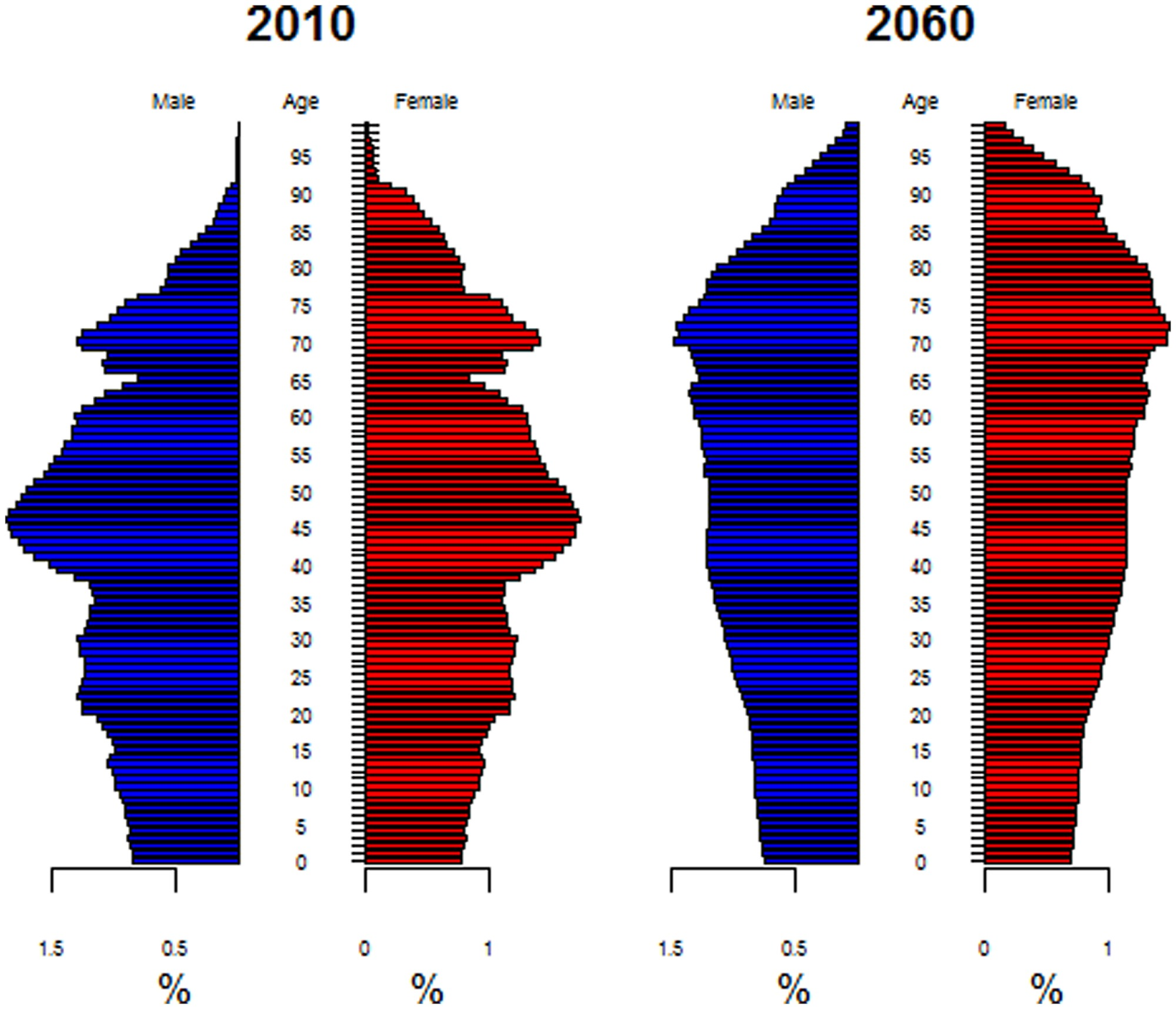The age distribution is one of the most fundamental characteristics of the populations. It is the most widely studied phenomenon by the demographers. Generally, they use the population pyramid that is the bar chart in which each of the horizontal group represents the individuals of the specific age groups. The age distribution of a population significantly helps to determine its future growth rate.

Classification According to Age Distribution
The individuals can be classified into three groups based on the age distribution, such as pre-reproductive, reproductive, and post-reproductive. Populations that have large pre-reproductive and the reproductive groups are likely to experience the growth periods shortly. If a large number of the post-reproductive populations are present, then it means that the addition of the new populations is low for that population. It may lead to the zero growth, or the growth and size of the population may be declined.
Relation of Age Distribution with Population Prediction
The age distribution is very important for the management of the populations. In the management schemes, it is important to follow and manage the levels of the reproductive individuals according to the structure defined by the age distribution. Age distribution significantly affects the growth of the population, as the younger individuals are likely to go for more reproduction. Whereas, in older individuals, there is a higher rate of death. The age distribution is usually represented by the population pyramid. These pyramids indicate that were, the population is growing, where it is getting stable, and where it is declining. It shows the graphical illustration of various age groups in a population. It has a distinguished pyramid-like shape to show the growing population.
Why Age Distribution is Measured
A population may consist of various age groups. Statistically, the age distribution can be measured for a population, but not for the individuals. A population pyramid is used in the ecology, for the determination of the overall age distribution in any specific population. It is a strong indication of the reproduction capabilities and determines the likelihood of the continuation of the species. It gives a clear picture of the fertility rate. It can be used for predicting and forecasting the future of species. Some populations have the clumped distribution of the individuals, some have a random distribution, and some of them manage to have the even distribution. All of these factors significantly contribute to the age distribution and the attributes of the population.